
Contents





Love Travels Through the Strings of the Violin






Finding Flavors of
the World in Korea
Food as an Experience
Although Korea is often described as one of the world’s most homogeneous societies, when it comes to international food and restaurants, the country is home to a surprising and growing amount of diversity. As more and more people travel abroad and as the number of international tourists coming to Korea increases, the authentic international food scene here can only get better.
Written & photographed by Todd Sample, CEO and Co-founder of Eathentic
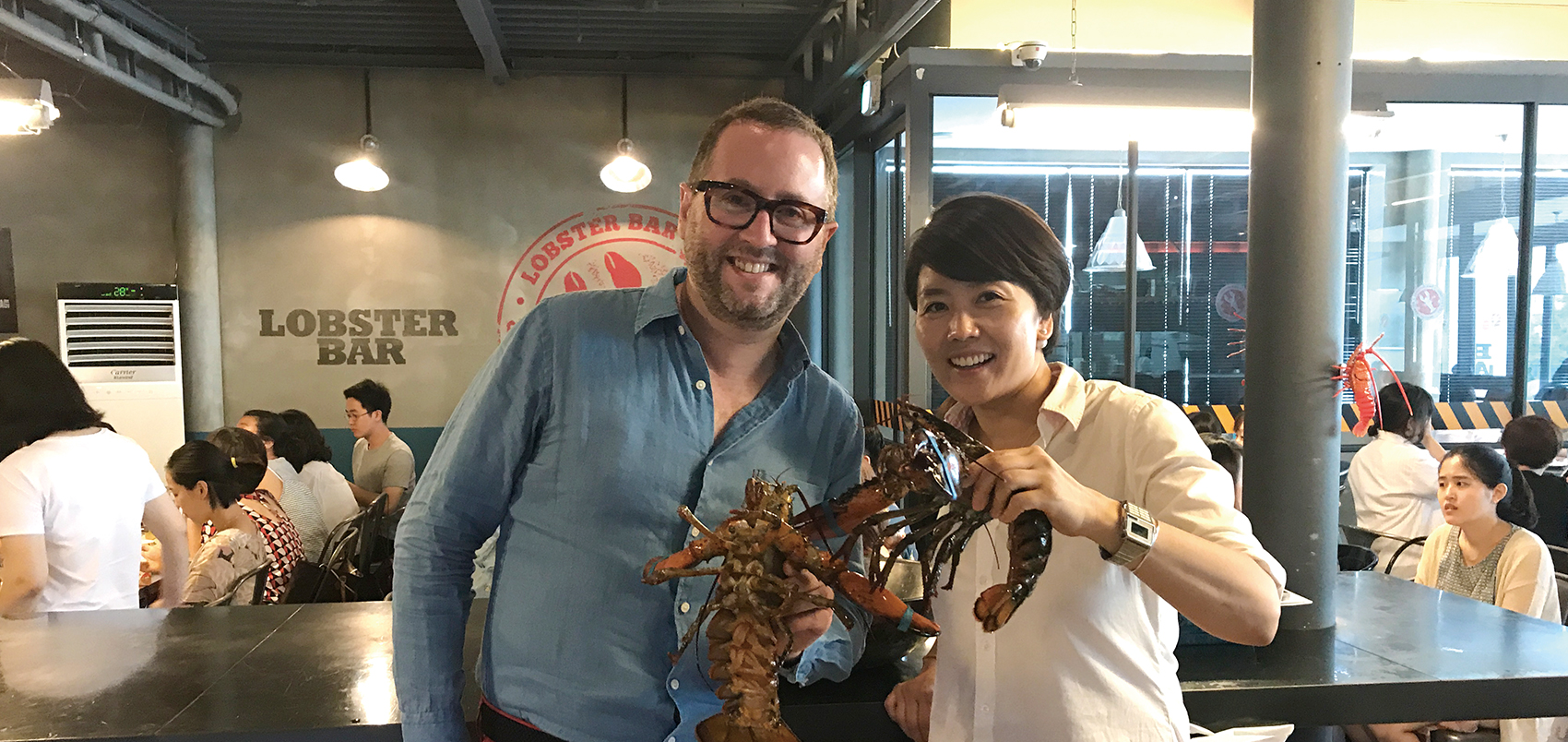 Todd Sample and Sara Park check out lobsters at a social dining event.
Todd Sample and Sara Park check out lobsters at a social dining event.From Insular to Global in
Two Short Decades
One of the easiest and most enjoyable ways to become familiar with a different society is by tasting and experiencing its food. When I arrived in Korea in 1995 knowing very little about the country, a lot of the insight about my new home was gained at the table. Sharing side dishes and watching everyone at the table eat soups and stews out of the common pot in the middle of the table taught me about the communal nature of Korean society, while the levels of distinct, in your-face flavors found in many Korean dishes helped me realize that Koreans prize straightforwardness over subtlety. Drinking with my acquaintances and observing the way younger people poured drinks with two hands and turned away when drinking with elders offered a firsthand glance into the importance of reverence for hierarchy that exists in Korea.
Looking back, 95 percent of the meals I ate during my first year in Korea featured Korean dishes. I can honestly say that I enjoyed nearly every single bite of them. That said, from time to time, I found myself longing for something different, whether it be a taste from home or some food from another country that I had previously visited. In the mid-1990s, however, authentic international food was nearly non-existent in Korea. Non-Korean food options were limited to a few international fast food franchises or to localized interpretations of Chinese, Japanese, or “Western” dishes. This is understandable, as the non-Korean population of Korea back then was roughly 450,000 people, less than 20 percent of what it is today. Furthermore, travel among Koreans was much rarer then than today.
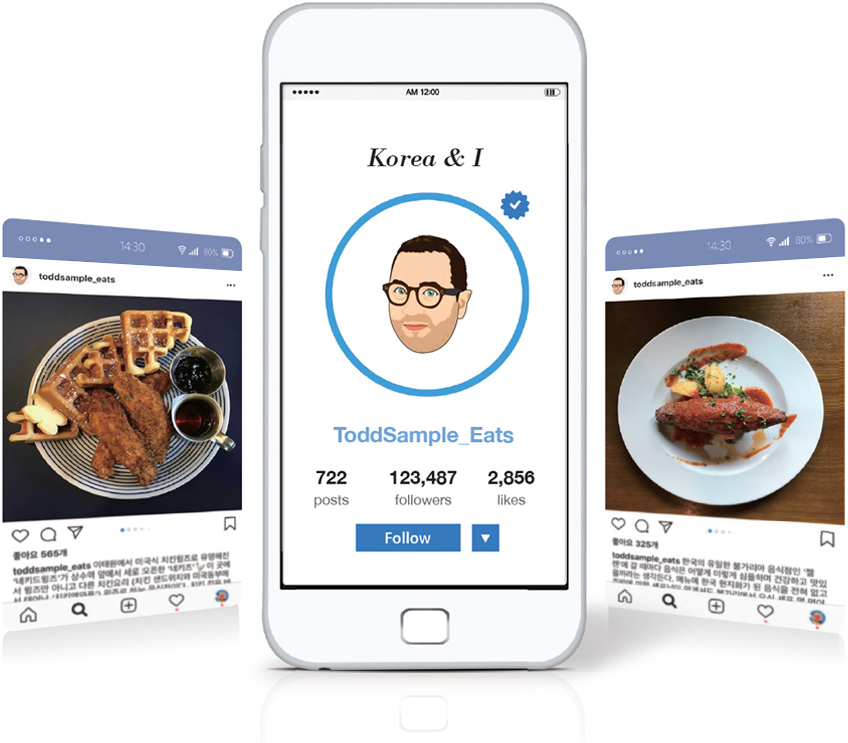
Fast forward to 2018. We’re living in a very different Korea in regard to how much more internationally aware and exposed people have become. The non-Korean resident population has surpassed 2 million, or more than 4 percent of the national population. Since 2015, tourist visits to Korea have averaged over 14 million annually. More so than the growing presence in Korea of non-Koreans, however, what can be considered the most significant contributor to the country becoming more international has been the staggering amount of overseas travel by Koreans themselves.
In 2016, over 22 million people, or 43 percent of the Korean population, traveled abroad at least once. For a geographically isolated country like Korea, from which departures abroad require a plane or a boat, this number is impressive. What is even more impressive is that, in comparison, in that same year France, a country from which trips abroad can be made on foot, saw only 41 percent of its population travel abroad. From an insular Korea, whose hostility to many things foreign was still openly apparent 23 years ago, to today: oh my, how things have changed.
An International Palette
When international travel first became popular among people in Korea, preparations usually included packing suitcases full of instant noodles, packages of condiments, like gochujang Korean red pepper paste, and even boxes of soju domestic alcohol. Package tours didn’t even bother including stops at local restaurants; unless they were Korean, of course. Today, however, package tours have dropped in popularity as people now prefer that their international vacations include authentic local experiences, not ones that have been curated by some travel agency to appeal to “Korean taste.”
This interest in authentic experiences has translated into a stronger desire for authentic flavors when eating out back home, too. As palettes have become more curious about, and accepting of, nonlocalized international food, more and more restaurants serving authentic flavors and dishes from countries around the world have opened for business across Seoul and even the rest of Korea to meet a rising demand. More inbound tourists seeking the occasional taste of home in addition to their Korean meals during their time in Korea have also become a big market.
At present, Korea has over 650,000 restaurants that serve a population of 51 million people. For some perspective on just how many restaurants that is, the United States, with a population nearly seven times larger, is home to only 1.2 million restaurants. In short, Korea is a country where people love to eat and drink out.
 Todd Sample is interviewed at an event.
Todd Sample is interviewed at an event.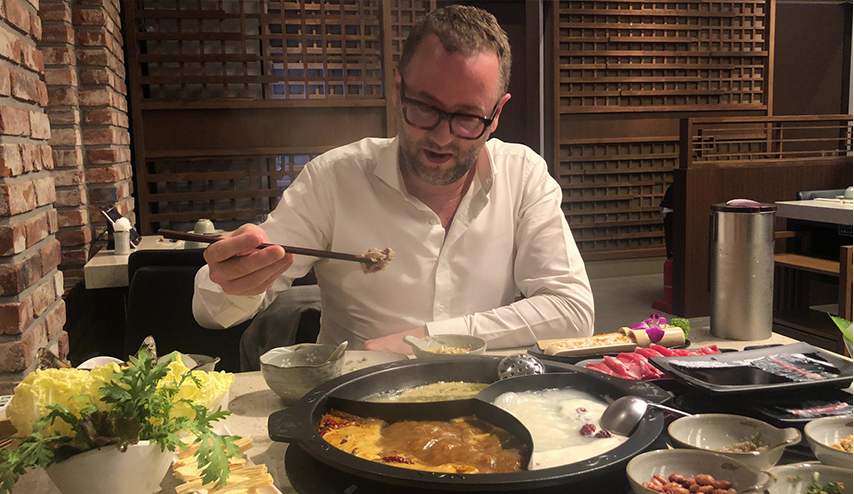 Todd Sample always exposes himself to new cuisine and tries to understand diverse cultures.
Todd Sample always exposes himself to new cuisine and tries to understand diverse cultures.
The vast majority of these restaurants are Korean, of course. Dishes like a hot bowl of doenjangjjigae soy bean paste stew, marinated doeji galbi pork ribs cooked at your table over a pot of fiery red coals, or a simple bowl of bibimbap mixed rice are favorites among Koreans and non-Koreans alike. As easy as it is to find these Korean dishes and others throughout the peninsula, today it’s also possible to find and enjoy Spanish food made by Spaniards, Italian food made by Italians, Moroccan food made by Moroccans, Japanese food prepared by Japanese, and Thai food made by Thais. There is also no shortage of Korean nationals who have immersed themselves in other cuisines and have learned overseas the authentic ways of cooking, and then returning to Korea. Just as Korean food differs from region to region, the same can be said for nearly every cuisine in the world. Ingredients, weather and cooking styles have evolved in different ways even within the same country. Throughout Korea today, restaurants specializing in the culinary specialties of Brittany in France, Yunnan Province in China, the U.S. South, Sicily in Italy, and Ho Chi Minh City in Vietnam can all be found.
From the perspective of someone like myself who enjoys both learning about new cultures and eating delicious food, it couldn’t be a better time to be in Korea. Upon realizing that I was not the only person with such interests, in late 2015 I started a hobby Twitter account. I introduced some of the restaurants around Korea that strove to serve authentic international cuisines and flavors. Thanks to the rapid rate at which this account gained followers, it became obvious that when it comes to eating out, people were interested in more than just restaurants that served delicious food. They wanted restaurants that served authenticity and restaurants that offered stories about the food, the country, the cuisine, and the people making the food, in addition to just a tasty meal.
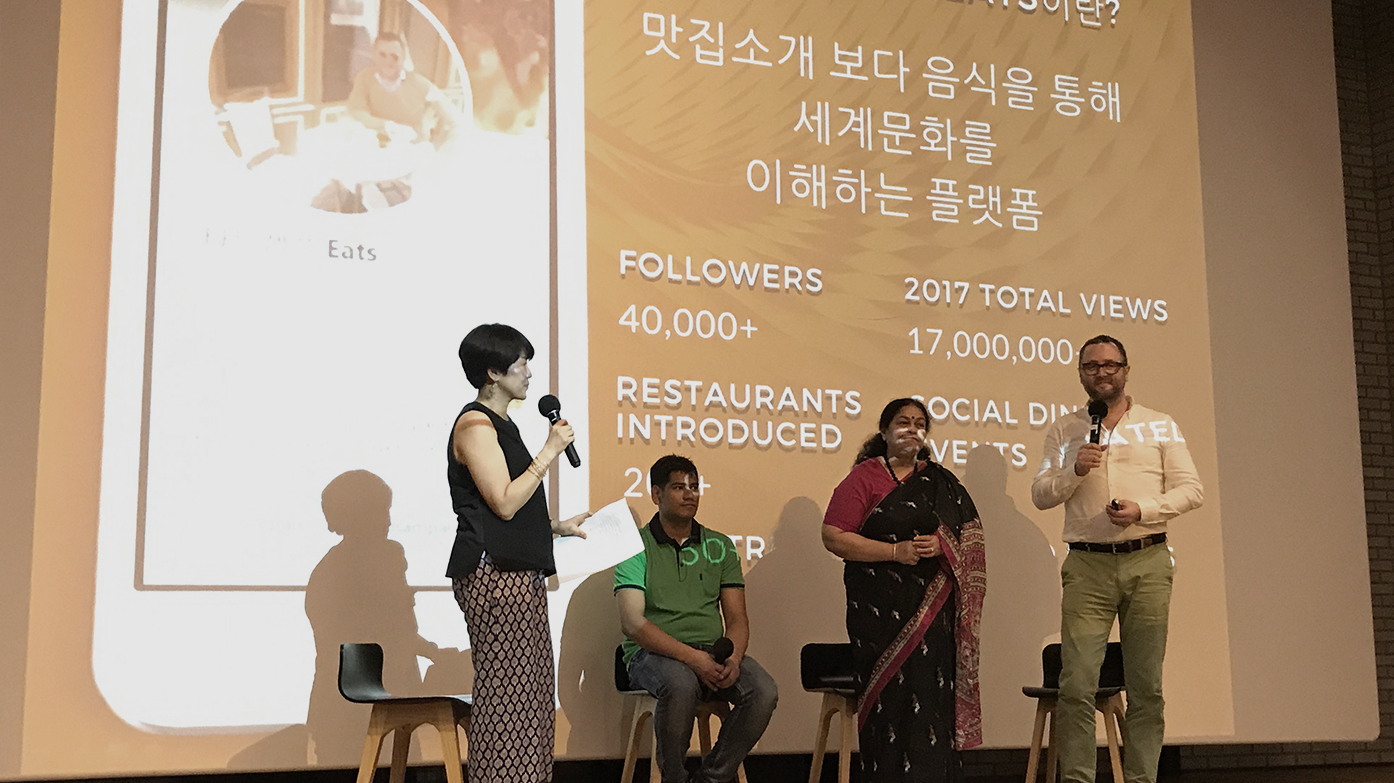 Todd Sample explains his Instagram account to the audience.
Todd Sample explains his Instagram account to the audience.Food as an Experience
As the number of followers on Twitter continued to grow and grow, the decision was made to add an Instagram feed, as this social media platform focused more on the visual appeal of unique food. With both social media channels increasing in popularity and more opportunities coming our way as a result, the hobby social media presence became a company called Eathentic co-founded with Sara Park.
Both Sara and I knew that in order for more authentic international restaurants to open in Korea, there had to be a way to learn more about the cultures behind the tasty dishes. We started holding “social dining” events focused on a different country’s cuisine each month. Our followers could come and enjoy a specially-prepared meal, all while also learning more about the country’s food culture, cuisine and ingredients from the chef or owner of the restaurant. Our “social dining” events bring together all types of food-lovers ranging in age from 25 to over 70. Although most of our followers are in their 20s to 40s, considering that older people are often perceived as being conservative in terms of their food choices, it’s great to see that a generation of young people openly accept new and unique flavors. To date, we have held 24 “social dining” events over the past two years and today they are more popular than ever.
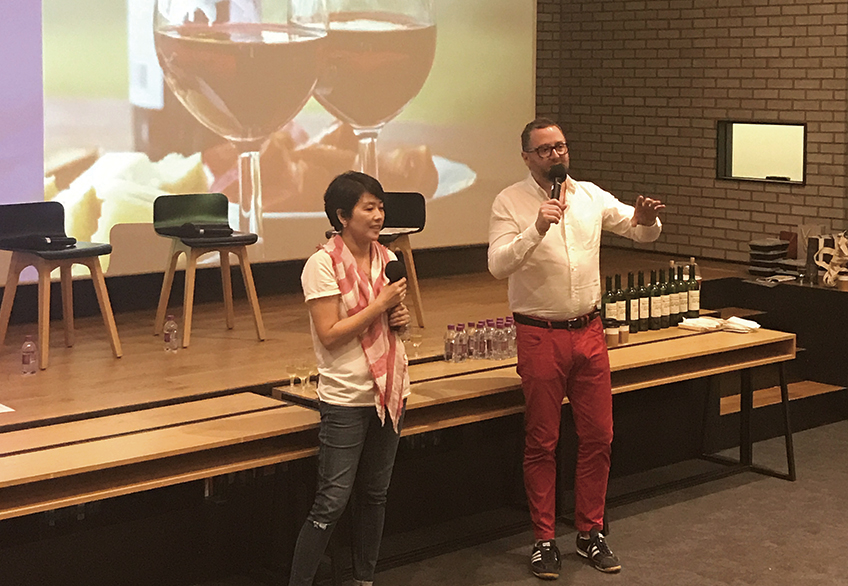 They give away lucky draw prizes at “Cinemat.”
They give away lucky draw prizes at “Cinemat.”Our second monthly event is called “Cinemat,” a combination of the words “cinema” and mat, which means “taste” or “flavor” in Korean. A “Cinemat” consists of an international film about food followed by a meal featuring the food that appeared in or that was inspired by the film. As diners enjoy their meal, we are joined by the chef who prepared the food, as well as a representative from the respective country’s embassy for a casual panel discussion about that country’s food.
Through our work, Sara Park and I want to raise awareness of international food culture so that people unfamiliar with a particular country’s food can appreciate it all the more when they try it for the first time. With a higher level of understanding, we hope that the first time will turn into a second and a third time, so that eating authentic food becomes an everyday occurrence.
Korea & I features contributions from non-Korean, reflecting the opinions of the writers as faithfully as possible. Thus the opinions expressed therein may differ from the opinions of the editors of KOREA magazine.
Other Articles





Love Travels Through the Strings of the Violin





Application of subscription
Sign upReaders’ Comments
GoThe event winners
Go


 October 2018
October 2018


